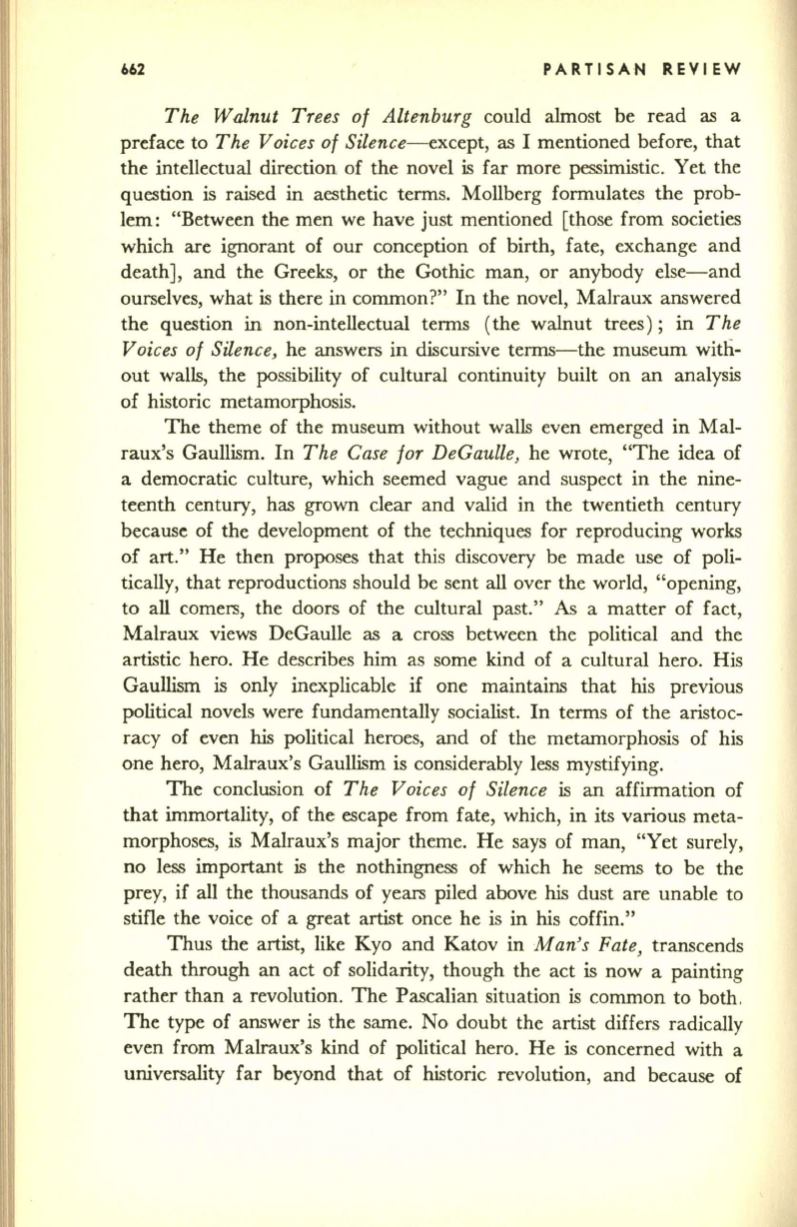
662
PARTISAN REVIEW
The Walnut Trees of Altenburg
could almost be read as a
preface to
The Voices of Silence-except,
as I mentioned before, that
the intellectual direction of the novel is far more pessimistic. Yet the
question is raised in aesthetic terms. Mollberg formulates the prob–
lem: "Between the men we have just mentioned [those from societies
which are ignorant of our conception of birth, fate, exchange and
death], and the Greeks, or the Gothic man, or anybody else-and
ourselves, what is there in common?" In the novel, Malraux answered
the question
in
non-intellectual terms (the walnut trees); in
The
Voices of Silence,
he answers in discursive terms-the museum witli–
out walls, the possibility of cultural continuity built on an analysis
of historic metamorphosis.
The theme of the museum without walls even emerged in Mal–
raux's Gaullism. In
The Case for DeGaulle,
he wrote, "The idea of
a democratic culture, which seemed vague and suspect in the nine–
teenth century, has grown clear and valid in the twentieth century
because of the development of the techniques for reproducing works
of art." He then proposes that this discovery be made use of poli–
tically, that reproductions should be sent all over the world, "opening,
to all corners, the doors of the cultural past." As a matter of fact,
Malraux views DeGaulle as a cross between the political and the
artistic hero. He describes him as some kind of a cultural hero. His
Gaullism is only inexplicable if one maintains that his previous
political novels were fundamentally socialist. In terms of the aristoc–
racy of even his political heroes, and of the metamorphosis of his
one hero, Malraux's Gaullism is considerably less mystifying.
The conclusion of
The Voices of Silence
is
an affirmation of
that immortality, of the escape from fate, which, in its various meta–
morphoses, is Malraux's major theme. He says of man, "Yet surely,
no less important
is
the nothingness of which he seems to be the
prey, if all the thousands of years piled .above his dust are unable to
stifle the voice of a great artist once he is in his coffin."
Thus the artist, like Kyo and Katov in
Man's Fate,
transcends
death through an act of solidarity, though the act is now a painting
rather than a revolution. The Pascalian situation is common to both .
The type of answer is the same. No doubt the artist differs radically
even from Malraux's kind of political hero. He is concerned with a
universality far beyond that of historic revolution, and because of


